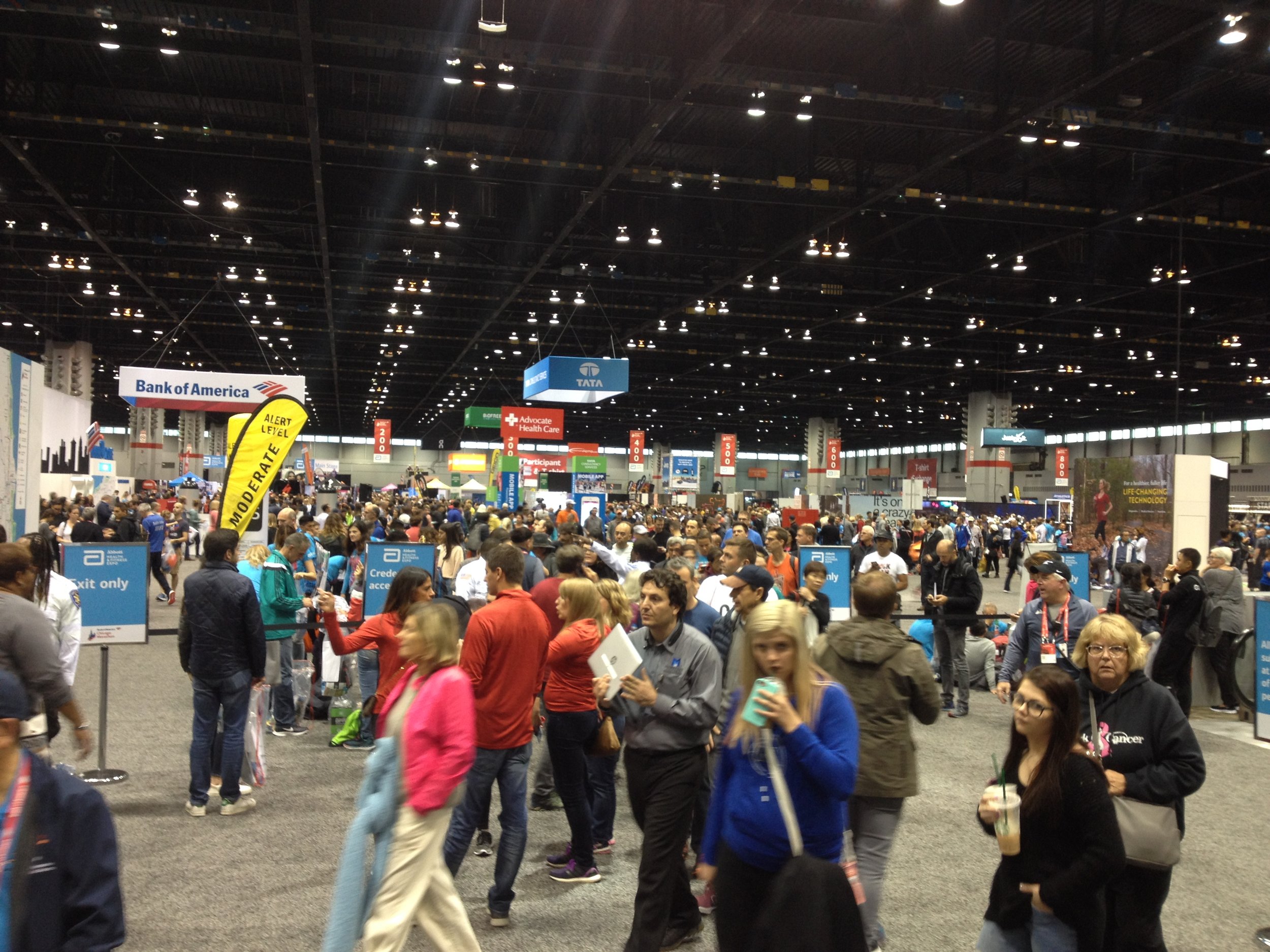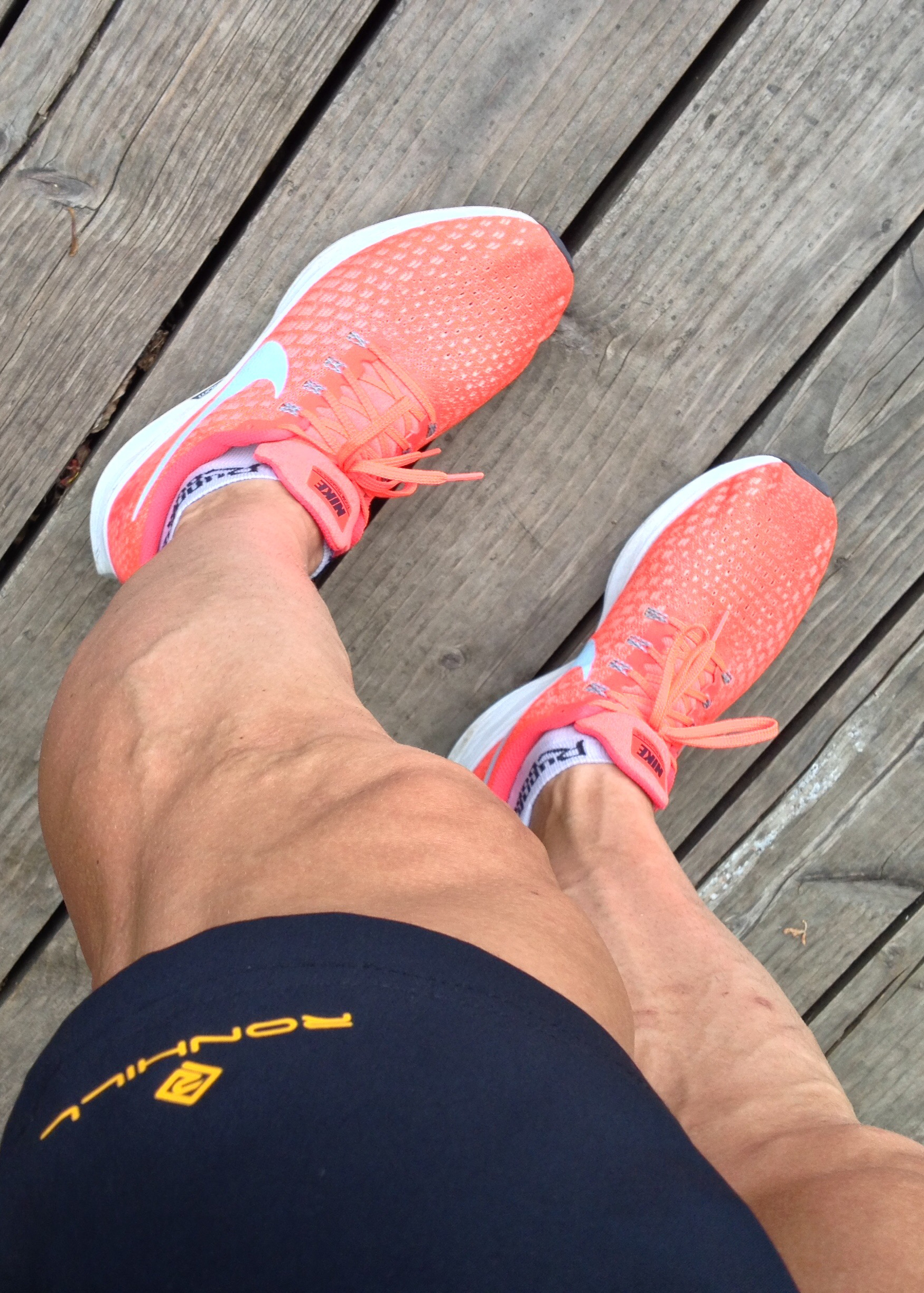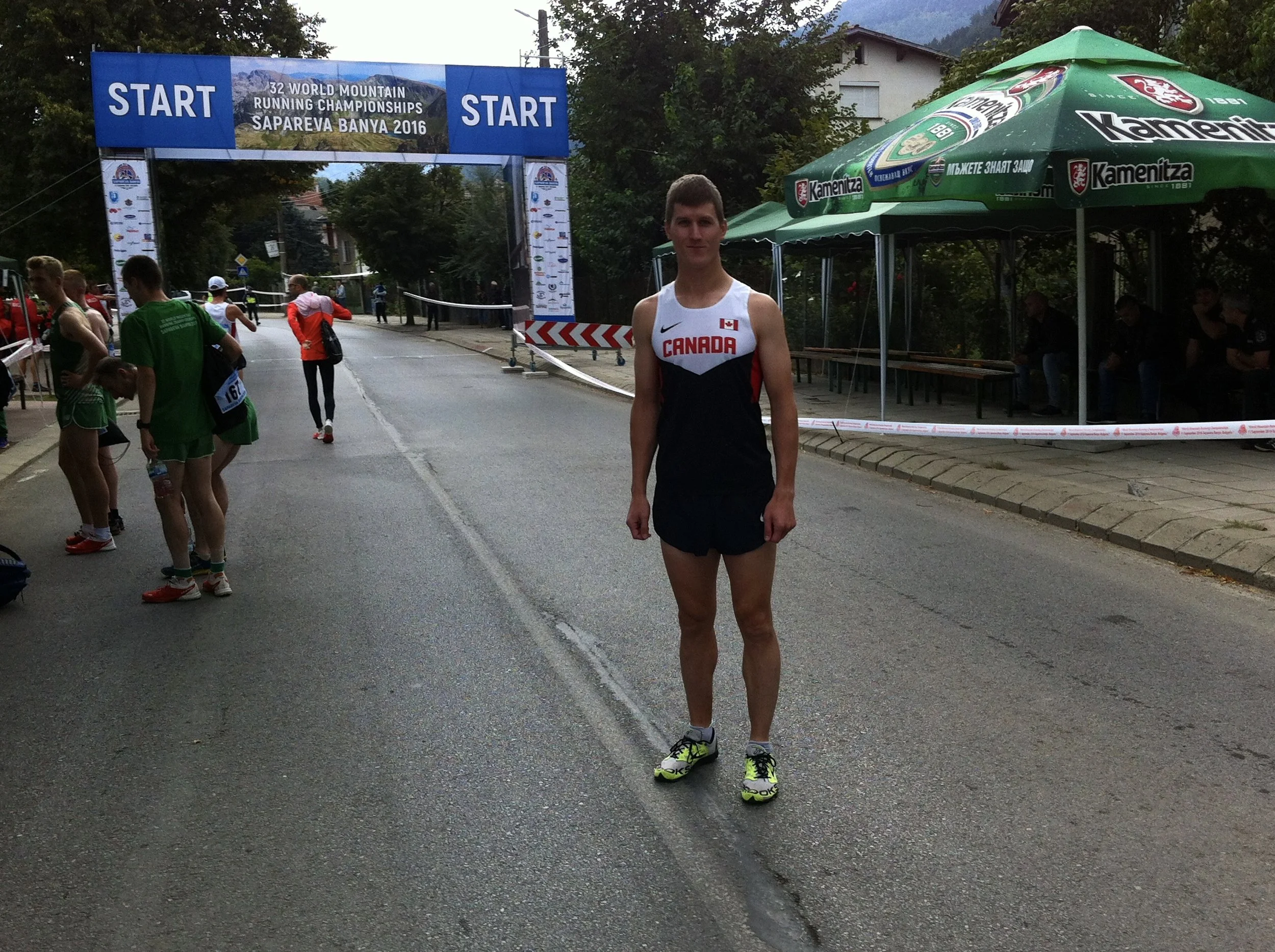By: Matt Setlack
This post will describe my experience at the Chicago Marathon on 07 Oct 2018. Although I have participated in six marathons when I was 17 to 21 years old, this was the first marathon that I seriously trained for and raced competitively (that was the plan anyway). At first, I was apprehensive about sharing my experience as the Chicago Marathon was most certainly not sunshine and rainbows. However, sometimes you can learn just as much, if not more, from a less than ideal race experience than from a good one.
Tues 02 Oct 2018 - Travel from the Great white north
Because of the poor road conditions, it took Emily and I about 9 hours to drive from Cold Lake to Calgary. As we got closer to Calgary, the weather deteriorated and we saw numerous vehicles in the ditch. It was so icy that most sensible motorists were driving around 70 kph rather than the posted speed limit of 110 kph.
A motorist who was driving 100 meters in front of us lost control, spun around three times, struck the front end of his vehicle on the centre median and then slid into the ditch backwards. We stopped to make sure he was okay (he was) and waited with him until a tow truck arrived. Further on, we had to divert around a section of road that was closed to traffic. There was a snowfall warning in effect for Calgary and I saw on the news that this was the most snow Calgary had seen on 02 Oct in the past 104 years!
Wed 03 Oct 2018 - 2nd day of travel
I decided to fly out of Calgary rather than Edmonton because there was a direct flight from Calgary to Chicago O’Hare, the flight was much less expensive, the flight options were more numerous, and the flight was only 2:38 versus close to 6-7 hours flying out of Edmonton.
The international departures area of the Calgary Airport was extremely nice. It looked new and recently renovated. The sun was shining through the big windows and it was quiet like a library. Hardly anyone was around and there were plenty of comfortable seats.
The Chicago O’Hare airport looked quite industrial. I rented a car and drove to the Marriott hotel in Burr Ridge (30 minutes SW of downtown Chicago). Thanks to Emily for finding and booking this for me.
Thurs 04 Oct 2018 - In search of the Vaporfly 4% Racing Flat
This is a story in itself. If you’re interested in hearing about my impressions of the Nike Vaporfly 4% racing flat, what Nike touts as the fastest running shoe on earth, please click the “REVIEWS” section above.
Fri 05 Oct 2018 - Race Expo Day
I drove to the race expo and joined the 45,000 other runners to pick up my race bib number. It was extremely busy, noisy and crowded and after an hour I was ready to leave. Most runners there were walking at a “Sunday Stroll” pace rather than the “move with a sense of purpose” pace that I like.
Thankfully, I received the “discounted parking rate” of only $10 USD (compared to the $23 USD regular parking rate). The parking company is making $450,000 USD on parking alone over two days for this event. Not a bad deal for them. haha.
In the evening, I ran 30 minutes on the hotel Life Fitness amazing treadmill. I ran with energy gels in my back pocket and in my hands. 4 gels in the centre back pocket of my Ronhill Everyday Split Shorts (amazing shorts, by the way) had a tendency to bounce up and down (each gel is about 32g so that is 128g total of gels). 3 gels or less, however, did not bounce up and down. I decided that I would carry one gel in each hand and two gels in the back pocket. When I’m down to 3 gels, I planned to place 3 in the back pocket because otherwise I might have a tendency to drift, while being laterally unbalanced. haha
Food
I ate all my meals from the local grocery store called Brookhaven Marketplace. It is similar to Sprouts grocery store. They have a lot of imported foods and the prices reflect this. I usually buy a pre-cooked pasta dinner or salmon with rice dinner for $6 to $9 USD with a bottle of apple juice. I like that I can see exactly what I am getting and I also like the price (compared to eating at a restaurant).
Marathon Fuel
I was a little uncertain of what to eat during the marathon. I never eat anything on any runs even for long runs up to 2:15. There is a lot of selection of different gels, drink mixes and energy chews. They all seem slightly different in terms of composition but I’m sure they all do the same thing.
I planned to take a gel before the start and every 30 minutes after that so I planned to carry 4 gels (1 in each hand and 2 in my back centre pocket). I also planned to to drink a lot of water and gatorade while on the course especially during the first half as was recommended to me by my friend, Karl Augsten (who ran the 2017 New York City Marathon in 2:31).
Sun 07 Oct 2018 - Race day
I thought I felt quite good going into this race. I woke up at 3:30 am and left the hotel at 4:15 am. I arrived at the parking garage beneath Grant Park at 4:55 am and was ready for the race well in advance. I was so early that it was still dark out and difficult to see anything inside the portable toilets. It was exciting to warm up with some of the world’s best marathon runners including Galen Rupp. I also saw Dayna Pidhoresky and Melanie Myrand during the warm-up.
Start
I followed Tom McGrath’s (an experienced marathoner) advice to start on runners left at the very start. This worked out really well and there were numerous other Canadians in the same area including Brian Yorke, Eric Bang, Kyle Wyatt, Shelley Doucet, myself, and another Canadian female racer.
For the start of a race with 45,000 runners, I thought there would at least be a “3, 2, 1 go” countdown or “on your marks, get set, go” but there was nothing, just the pop of the starter pistol. Thankfully, I could see a bystander (maybe she worked for the race organization) holding up one hand and clicking down the seconds with each finger in silence.
0-5 km
I was very surprised at the thick density of runners from the start right up until at least 5 km. It seemed that everyone went out quite fast. Around 4 km or so, I caught up to some of the best elite women racers in the world and ran next to them, with a bunch of other men, for a few kilometres.
My goal time for 5 km was 17:05 and I went through in around 16:45 to 16:50. I felt very relaxed even though I was not drafting behind anyone.
5-10 km
I still felt quite fresh as I continued to run by myself. At 30 minutes into the race, I ate a gel with water. Throughout most of the race, with the exception of the last 5 to 10 km, I took gatorade at every station.
My goal time for 10 km was 34:10 and I went through in around 34:05, I think. I was still ahead of schedule.
10-15 km
At 12.5 km, the course makes a big “u-turn” and you go from running north to running south. As soon as I turned the corner to head south, I could feel a headwind and the next guys ahead of me were at least 100m ahead (Paddy Birch in a black Team Canada singlet with a group of guys). Still running by myself.
51:15 was my goal to go through 15 km and I remember being ahead of pace at this point.
15-20 km
I still felt quite good. I continued to take in one gel every 30 minutes. I was still running into a headwind. At about 20 km, a guy in a blue singlet ran past me and made a motion for me to tuck in behind him. That was awfully kind. The thing I love about the marathon is that everyone seems to be willing to help out everyone else (rather than directly competing against them which tends to happen in other races).
21.1 km (half way)
My goal for 21.1 km (half-marathon) was 1:12:04 and I went through half in 1:12:04 feeling smooth, strong and in control. Perfect.
20-25 km
After 21.1 km, I was still keeping a decent pace but was starting to slow down. I was still running by myself. I really started to notice that my new Nike Vaporfly 4% Flyknit racing flats were not as comfortable as I thought.
25-30 km
This is when things really started to get ugly. 27 km was definitely the point at which I thought about dropping out of the race. I was still by myself, people started to pass me and it continued to rain. At about 27 or 28 km (around 90 minutes into the race), my condition seemed to deteriorate rapidly.
At about 28 km, I started to feel a little twinge in my right leg. I had felt this before (at a much lower magnitude) while running on the treadmill in the two days leading up to the race. I didn’t think it was that big of a deal. However, little things become big things very quickly (and they magnify not linearly but exponentially in a marathon). It was more than a simple discomfort. It was at a level where it was affecting the amount of power I could push off from my right leg with. My left leg felt fine.
From about 27 or 28 km onwards, I was no longer “racing”, I was simply trying to get to the finish line. Not even get to the finish line quickly, just get to the finish line so I could get out of there.
30-35 km
Things were quite bad in this section, I definitely thought about dropping out but did not want to let down my family, friends and all the people who had supported me. I thought that I may as get to the finish line. Besides, I had already paid the $220 USD entry fee, paid for the airline ticket, hotel, etc. May as well get my moneys worth.
35-42.2 km
For pretty much the entire second half of the race, other runners passed me; only a few people at first but then more and more people as I progressively slowed down. It was extremely embarrassing to be passed by so many runners.
What went wrong?
I think it was a combination of factors.
Pacing - It is possible that I went out a little too quick in the first half. My half personal best is 1:09:24. I ran 1:12:04 for the first half in the Chicago Marathon, which I thought (at the time) was quite conservative. Even if I had run 1:15 for the first half, I would have still had a faster finish time overall.
Right Leg - The biggest/main issue was my right leg (I think it was the hamstring behind my leg and deep down in my gluteus maximus). My right leg didn't feel 100% while running in the 2 days before the race. There was severe discomfort/pain in my right leg that got progressively worse. It was not just uncomfortable; I felt physically unable to generate any useful power out of the right leg. Not sure how this issue came about. A year or two ago, I felt the exact same thing in my right leg. It could be an overuse injury or maybe sitting for long periods of time could affect it as well (i.e. driving long distances like 9 hours and sitting for many hours each day for many months/years).
I think I was in 70th place around 21km but as I gradually slowed down, many many many people passed me (about 130 or so) and I ended up in about 190th or 200th place overall. It was extremely embarrassing. I considered dropping out around 30km but instead decided to jog easy to the finish (at a pace that was slower than my easy pace).
Gels - I took a gel every 30 minutes as directed by my coach (at 30 minutes into race, 1 hour, 1.5 hours, 2 hours). I definitely felt like my stomach/digestive system/bowel) did not like those gels. I had some minor stomach cramps but nothing major. I considered using the bathroom during the race but thought I would lose more time than I would gain.
Racing Flats - I think the brand new orange Nike Vaporfly 4% Flyknit racing flats could have affected me as well. I think the extreme stiffness of that shoe could have made me use different muscle groups that I'm not used to. In addition, the forefoot and mid midfoot is quite narrow and after wearing the racing flat for 2.5+ hours, the centre of both of my forefeet were both blistered/skin folded over from being squashed inside the shoe. The shoes felt fine during the two 30 minute runs I had done in them before the race.
Weather Conditions - The temperature was around +10 to +15C. Intermittent rain. Wet roads. Fairly windy. I ran most of the race by myself, which was ironic because I believe there were about 45,000 runners in the Chicago Marathon. Everyone faced the same conditions and therefore this was not really a contributing factor.
Possible Contributing Factor - I think when things are not going well in the non-running aspects of your life, they can negatively affect your training and racing performance. The opposite is also true (as was the case for me in 2017). For example, losing half your life savings because you were posted to Cold Lake (the mini Fort McMurray) and bought a house just before the worst housing market downturn in the past two decades.
Overall Thoughts on the race
Overall, I am extremely disappointed in my race especially considering how much time, effort and money that I put into it. It was very likely one of, if not THE, worst race I have ever run. It most certainly did not represent what I was capable of. However, I can honestly say that I don't think I could have done much about it on that day. Even if I went out slower, I think the leg issue would have still arisen. I am still trying to determine what good/lessons learned I can pull from the Chicago Marathon.
I ran the first half in 1:12:04 (3:25/km avg) and the second half in 1:26:36 (4:06/km avg). I finished the race in 2:38:40, which although is a new personal best marathon time for me, it is not the time I was hoping for and capable of. The marathon is a beast and if anything is bothering you before the race, it will be magnified on race day.
What I would do differently next time
Trying new things before a 42 km race is a bad idea. Before this marathon, I had never used gels/water/gatorade on any run (even 2:15 long training runs). I also had never raced in the Nike Vaporfly 4% Flyknit racing flat before (I only ran two easy runs of 30 minutes each).
Pay close attention to any aches/discomforts in the months, weeks and days leading up to a marathon. Don’t assume slight pains won't manifest into agony on race day. Consider not starting if there is any doubt regarding injury.
Thanks for reading!



































